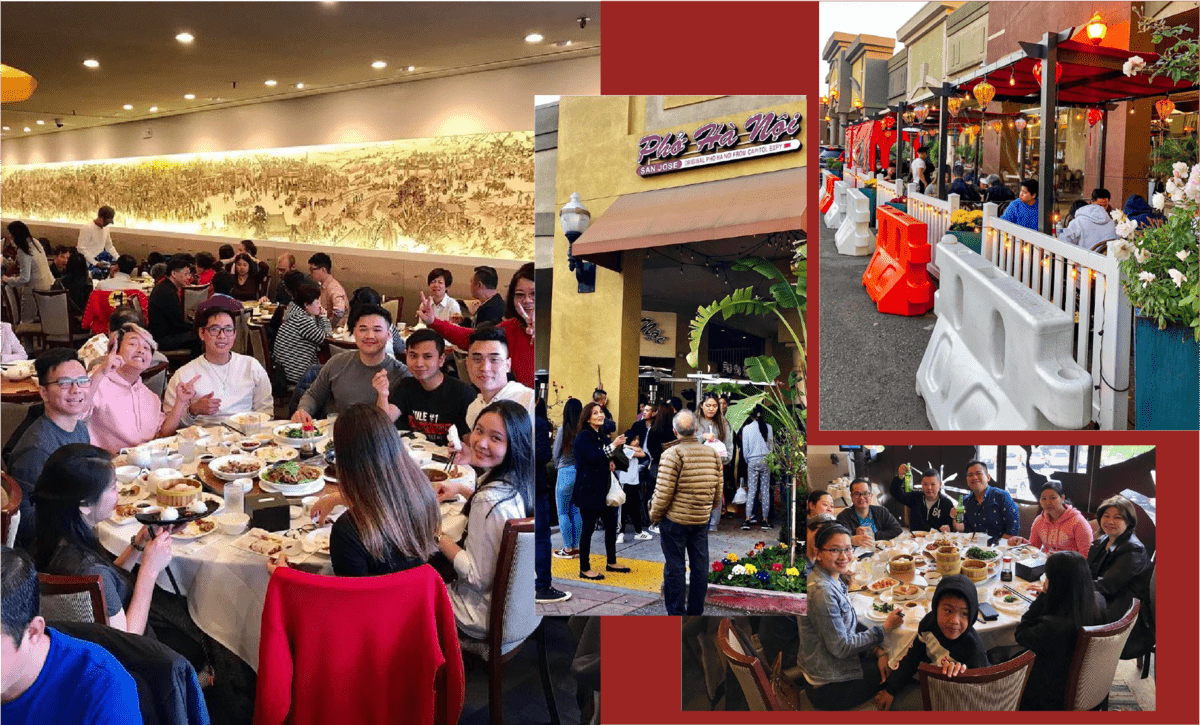
In the US, Helen Nguyen and Harry Nguyen in Silicon Valley in California opened a pho restaurant eight years ago. The Silicon Valley Business Journal published an article about the shop, saying that the Nguyens are striving to create a Vietnamese pho shop chain throughout California.
Newsbreak commented that the Hanoi pho sold in San Jose, California bears the Vietnamese spirit.
Pho Ha Noi is now a strong brand mentioned by many newspapers and journals in California and the US. Four pho shops in the chain are located in San Jose, Cupertino, Milpitas, and Palo Alto in California. The fifth branch is expected to open in Fremont.
Every day, the Pho Ha Noi chain receives 2,000 diners, while the figure is 5,000 on weekends. It can sell 3,000 bowls of pho a day sometimes. The revenue of the chain is up to $1.4 million a month (VND35 billion).
“Our eatery chain sells many Vietnamese dishes, but 50 percent of revenue comes from pho,” said Helen Nguyen, 54, the owner of the chain.
The couple came to the US to study and work 30 years ago. Harry was a technology engineer for a US firm before he resigned from his post, and together with his wife, started a business in import-export and delivery.
In 2012, their relatives migrated to the US. Helen started a new business which created jobs for the entire family. Harry and their daughter suggested they open a pho eatery.
The couple invested $500,000 to buy a restaurant and formula to make pho. However, they failed with the first attempt, because the dish was not favored by Americans as it had too much seasoning powder.
They had to start again from the very beginning. After many tries, a standard formula was found. “To date, the broth bears the typical taste of Hanoi’s pho, so we have to import cinnamon, anise, and cardamom from Vietnam,” Helen said.
“Pho broth must be cooked from high-quality American beef bones, plus peanut worms (Sipunculus nudus) imported from Vietnam," she explained.
After one year of preparation, the first Pho Ha Noi opened in Silicon Valley. When it began attracting many diners, Helen faced problems managing her staff. Her husband then thought of using technology to reduce the number of personnel, ease reliance on employees, and improve the quality of pho.
There is one general kitchen in the chain of eateries, where the main cook, her family members and veteran workers process food. A system of machines is used for different purposes, from cooking rice to steaming sticky rice to boiling chicken.
The machines are programmed to operate under set times, temperatures and water volume. Workers just press buttons to implement the processing.
From the general kitchen, the modern machines make the preliminary treatment, and divide materials into servings before they are packaged and brought to eateries.
“Every day, at the general kitchen, we simmer 600 kilograms of bones in two pots for 20 hours. The broth is then condensed and carried to different shops,” she explained, adding that it takes 15-20 seconds to create a bowl of pho with equivalent quality, and three workers are needed for the process.
A bowl of pho sells at $16-19 there (VND400,000-475,000), which is higher than the prices applied by other pho shops in the region. However, Helen said it is expensive because the materials she uses are the best.
She said that in the US Vietnamese mostly run their restaurants under the Mom-and-Pop model, i.e., family-run and small-sized eateries. This kind of restaurant can appear to be less professional to many Americans, so Vietnamese pho prices are lower than Japanese and Chinese dishes, she said.
“We don’t see pho as a low-cost street dish. We want to improve the value of Vietnamese pho,” she said.
Linh Trang - Do An